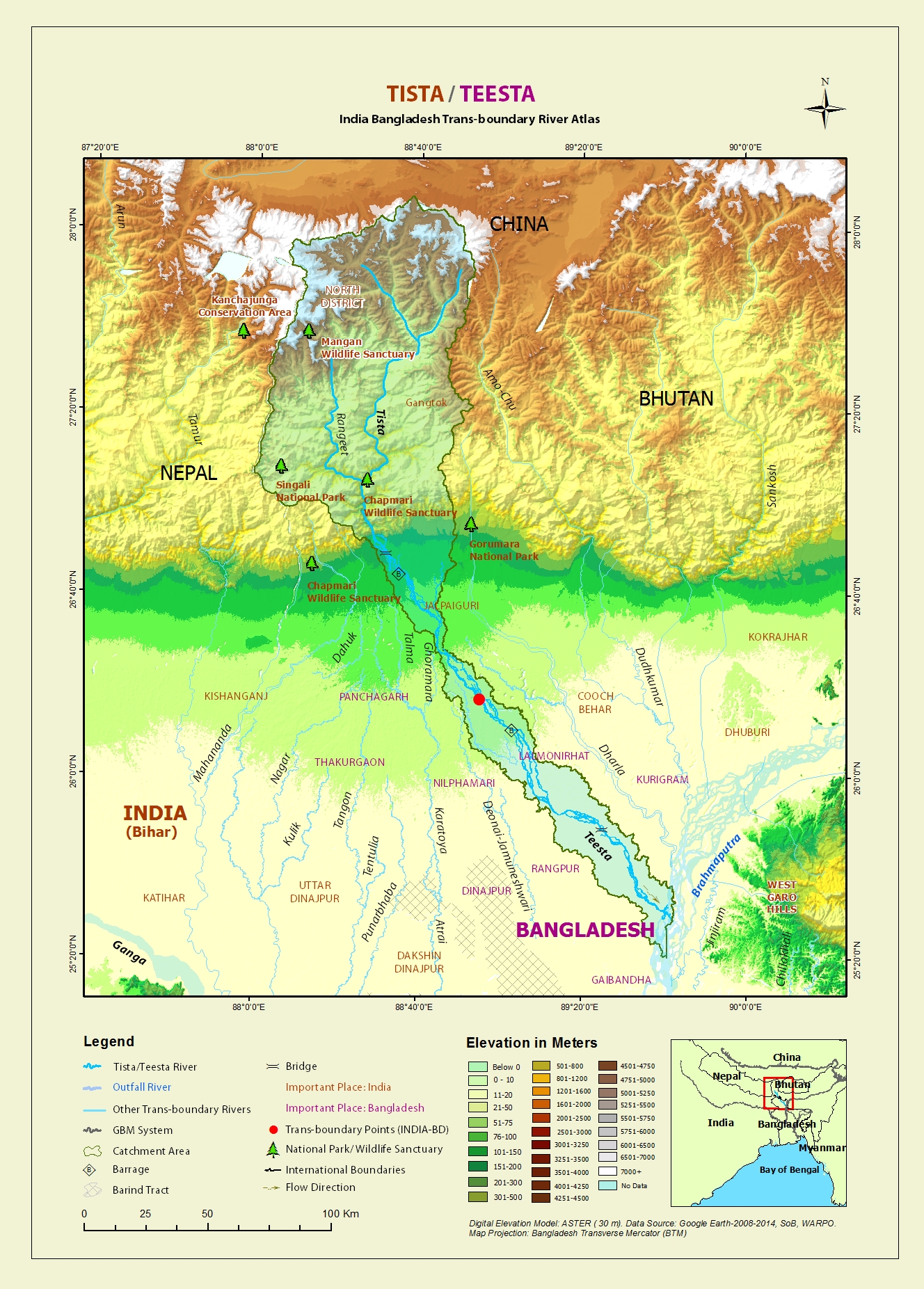India’s new Bharatiya Janata Party government has assured Bangladesh that the two would sign a water sharing treaty on the transboundary river Teesta. The fresh assurance came during the three day visit to Dhaka by Sushma Swaraj, India’s foreign minister, June 25-27.
“I am aware that there are issues of concern to Bangladesh which remain unresolved such as the sharing of the Teesta waters…” Swaraj said while delivering a public speech in Dhaka on June 26. “Our ministers and senior officials from a number of ministries will be taking the discussions forward. This includes the Joint Rivers Commission.”
But there was no clear assurance on when the treaty would be finalized or signed. The Teesta treaty was written up and ready for signature in 2011, when India’s former prime minister Manmohan Singh visited Dhaka. But it was scuppered at the last moment by Mata Banerjee, chief minister of the Indian state of West Bengal, through which the Teesta flows before reaching Bangladesh.
While briefing journalists after a meeting with his counterpart, Bangladesh foreign minister Abul Hassan Mahmood Ali said that Swaraj had expressed her hope that a Teesta deal would be signed. “India is always there for Bangladesh,” he also quoted Sushma Swaraj as saying.
The two South Asian countries share 54 rivers, with Bangladesh downstream for almost all of them. So far, they have a water sharing treaty over one river, Ganga.
History of Teesta water dispute
The Teesta starts in the Indian state of Sikkim, where India is building a large number of hydropower plants. Bangladesh also has extensive plans to utilize the river for hydropower generation and irrigation. Meanwhile, as the monsoon becomes more erratic due to climate change and excessive groundwater is withdrawn for irrigation, Bangladesh is becoming more dependent on river water.
For the eight months of the year when there is no monsoon, the Teesta is reduced to a trickle in north-western Bangladesh, where it is the main river for about 14% of the country’s cropland. This April, the water flow went down to around 500 cusecs, only 10% of Teesta’s usual dry-season flow, according to the Bangladesh Water Development Board (BWDB).
See: Teesta river runs dry as India and Bangladesh fail to resolve disputes
The water flow has been going down for the last two decades, since India built the Gajoldoba barrage about 100 km upstream of the Bangladesh border. Bangladesh has been pressing for a water sharing treaty since then, though talks over projects on this river have been going on since the 1950s. The Teesta is the fourth-largest of the rivers flowing from India to Bangladesh.
Since the 2011 scrapping of the treaty signature, India’s president, former prime minister, former foreign minister and former water resource minister have all assured Bangladesh that it would be signed after all. The core of the treaty is a 50:50 sharing of whatever water is there in the Teesta just upstream of the Gajoldoba barrage.
Dhaka is now hoping that the new government will be in a stronger position to resolve India’s centre-state problem. Foreign minister Mahmood Ali said, “Efforts were on in India to build internal consensus on the issue.”
Reacting to the development, Faridul Islam Feroze, convener of the Teesta Bachao Andolon (Save Teesta Movement), said the two countries may sign the treaty, but that would not end the sorrow of the people living by the Teesta. There would have to be an extensive programme to manage the river, because the riverbed was now full of sediment not being flushed down, and a sudden release of water would only worsen the floods now being seen every monsoon.
“There were only 500 cusecs of water flow just two months ago. It has reached 5,000 cusecs now and will increase even more in a few days,” he pointed out. The usual months for the South Asian monsoon are June to September.
A BWDB official said the water level was near the danger mark on June 27 near the Teesta irrigation project in Lalmonirhat, a district in northern Bangladesh that borders India.
This huge variation in the water flow creates other problems. Feroze said, “There are no fish in the river now.” Several fish species that were abundant even a decade ago have become rare as the river remains dry for a few months every year, he said.
The withdrawal of water upstream has ruined the livelihoods of thousands of fishermen and other people living on the river banks, said Abul Hasnat, Lalmonirhat district fisheries officer. “Common fish species have disappeared as mother fish are unable to survive when the water level recedes unusually.” In this district alone, 7,000-8,000 fishermen have no source of income for eight months a year, forcing the government to take up a project to provide them an alternative livelihood.
A Bangladesh-India joint study, Political Economy analysis of the Teesta River basin, said last year that in the dry season, fishermen living by the river are forced to go to other districts to seek work as farm labour.
After the collapse of the treaty in 2011, the West Bengal government asked river expert Kalyan Rudra to seek a solution. He said in his 2012 report that the water shortage started far upstream of the border, and was due to the hydropower projects.
India’s new government is supporting hydropower projects, so how it solves this dilemma remains to be seen.

